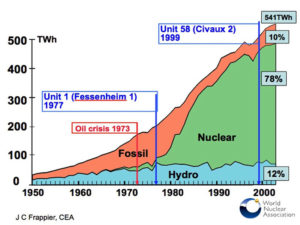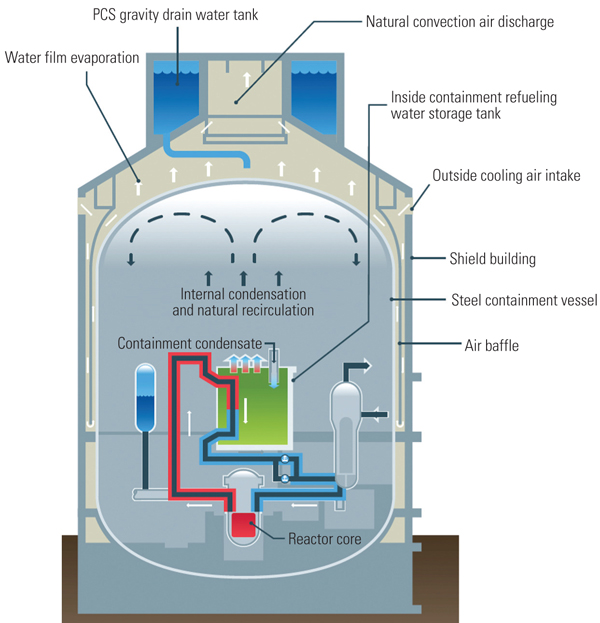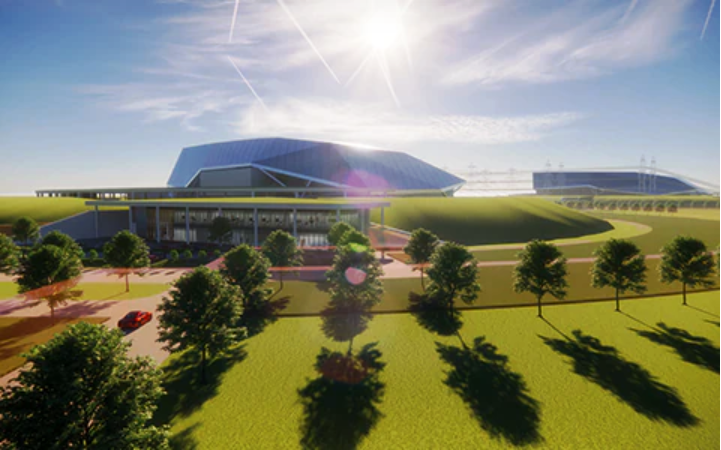
Nuclear Plant Options for Australia
In a 22 year period from 1977 to 1999 France built a generating system containing 58 reactors.
Its capacity was of similar size to Australia’s but generates only 40 gr CO2/kwh or less that a 20th of Australia’s emissions intensity.
You can download a PDF form of this page at this link.
Edition 2, Revised 6/12/2021
Nuclear Plant Options for Australia
The field of options for nuclear power plants is increasing rapidly.
In Canada, Ontario Power Generation is pushing ahead with the new BWRX 300 small nuclear power plant. In the UK, Rolls Royce has secured government funding for their new 470MWe small nuclear power plant with the potential to construct sixteen units on their grid.
We advocate for building plants in the near term and certainly before Australia has torn apart its existing grid.
Our first plants should use a proven design with a proven supply stream of equipment. It is also vital that the vendor can team up with a contractor and project management team that has recently delivered plants.
Large Reactor Options
Much enthusiasm exist around small nuclear power plants often referred to as “Small Modular Reactors” or SMR’s.
In Australia we can use large and small plants together. Large plants could be built tomorrow were it not for politics and a badly designed energy market. We have suitable locations in NSW and Victoria at the strong nodes of our grid. Small nuclear power plants could complement these large units where the grid is weaker.
There are currently 51 nuclear power plants under construction worldwide not including prototypes. Only seven of these are being constructed using plants from the USA (AP1000) or France (EPR) which have incurred significant time and cost over-runs. This happens when countries try to restart the nuclear industries. The rest are of Russian, Chinese and South Korean origin that may reflect a truer benchmark cost.
Over 100 power reactors with a total gross capacity of about 120,000 MWe are on order or planned and only a couple in the USA are Small Modular Reactors.
Many of the nuclear power plants currently under construction or planned are in nations of far less wealth than Australia and/or with more constrained grids. These include Bangladesh, Argentina, Romania, Turkey, Egypt, Kazakhstan, Pakistan, Finland, Hungary, Slovakia, Ukraine, Belarus and Uzbekistan. It is not credible to assume that all these nations are failing to maintain competitive power prices with nuclear energy.
Reactors currently being built and/or exported around the world are:
- AP1000 (1150 MWe) from Westinghouse.
- APR-1400 (1400 MWe) marketed by Korea Electric Power Corporation.
- VVER 1200 and 1000 models from OKB Gidropress in Russia.
- EPR – Evolutionary Pressurised Water Reactor from EDF in France.
- Hualong One 1150MWe pressurised water reactor from CGN/CNNC in China.
- Candu EC 6 (700 MWe) from Canada.
- ABWR – Advanced Boiling Water reactor from Hitachi GE.
Of these reactors, the Westinghouse AP1000, the ABWR and the APR 1400 are licensed by the Nuclear Regulatory Commission in the United States.
Within the UK, the EPR, the Westinghouse AP1000 and the ABWR have all passed approval by the Office of the Nuclear Regulator
The first five reactors are known as Pressurised Water Reactors or PWR’s. The CANDU is a unique Canadian design that uses natural unenriched uranium in a horizontal array of tubes known as a calandria. The seventh type is a boiling water reactor, which operates at a lower pressure than the other types.
We advocate for building plants in the near term and certainly before Australia has torn apart its existing grid.
These should use a proven design with a proven supply stream of equipment. It is also vital that the vendor can team up with a contractor and project management structure that has recently delivered plants.
On balance this comes down to Australia using the South Korean APR 1400 reactors. While China builds the Hualong 1 and Russia the VVER 1200, Australia’s close links with South Korea make this an attractive option. These could be delivered by a South Korean team managing the construction in Australia and using their vast and experienced equipment supply chain. This team is currently completing plants in the United Arab Emirates and in South Korea.
They could be built on the NSW Central Coast, Upper Hunter and the Latrobe Valley. South Korea has a history of delivering low cost plants on time and on budget. At 1400MW they are a little large for our needs our grid which could could be readily adapted to use them.
Barakah 5.6GW Nuclear Power Station in the UAE
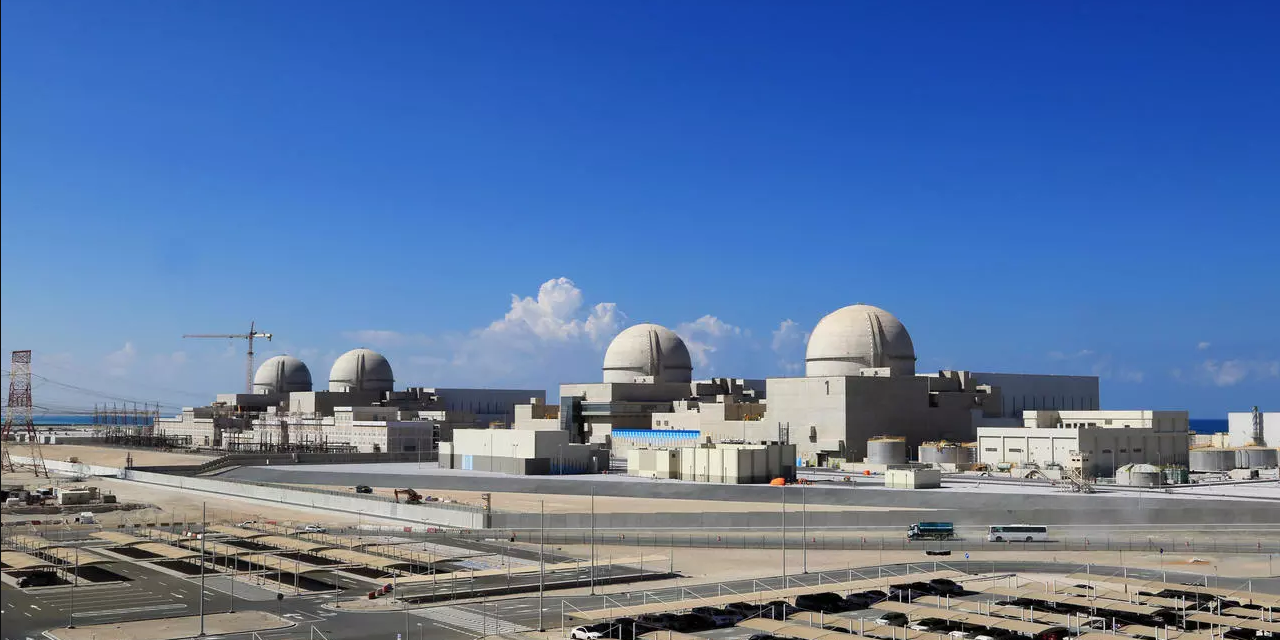
The Westinghouse AP1000 is an excellent option however it does not have as strong a network of constructors linked to the supply chain as the South Korean’s have. This will likely change when the Vogtle units in the USA and the new plants in the Ukraine are in operation.
The Westinghouse AP1000 plant is a 1.1GW unit that uses modular construction methods. Four units have been completed and are in full commercial operation. The first-of-a kind unit, Sanmen 1, completed its first refuelling outage in record time and was named the top performing plant in China by the World Association of Nuclear Operators (WANO).
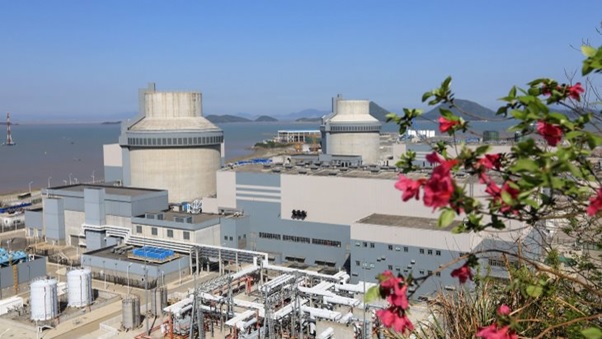
Generation III+ nuclear power plants – Sanmen Units 1 & 2 AP1000’s
Image from Westinghouse and World Nuclear News
Small Nuclear Power Plants and SMR’s
Large reactors could be pared with Small Modular Reactors (SMR’s) such as GEH’s BWRX 300, Rolls Royce or Generation IV plants such as NATRIUM orTerrestrial Energy’s IMSR reactor.
The front runner for use in Australia has got to be the General Electric BWRX 300.
On the 1st December 2021 Ontario Power Generation announced it had formalised its agreement with General Electric Hitachi to have its first BWRX 300 operational at its Darlington site by 2028. This plant was used in our economic modelling and is readily adaptable to a large number of sites on our grid. Australia should be teaming up with our Commonwealth cousins in Canada to get these operational in a similar time frame.
The success of these units is virtually guaranteed. They are a scaled down version of existing large plants being the 10th generation of Boiling Water Reactor designs. 90% of the nuclear related components are based on designs already in operation.
GE Hitachi BWRX 300
Compared to large reactors, the BWRX-300 aims to achieve about a 90 percent volume reduction in plant layout. It is designed to reduce the plant volume by about 50 percent per MW. For example, the large 1,520 MWe ESBWR has approximately 160,000 m3 of safety related concrete while the BWRX-300 has only 15,500 m3. The BWRX-300 will significantly improve the new reactor delivery due to its low cost and size.
It’s early days however this SMR aims to generate electricity at costs that are competitive with gas turbines and renewable generators.
SMR’s have the advantage of being able to operate over larger extremities of the existing grid without any significant upgrades.
Final Comment
Right now Australia is faced with the critical issue of choosing our future power system. International Energy studies by the OECD[i] have shown that a system that includes nuclear energy is less costly than one that excludes it.
Our future energy systems need to be planned around the critical trilemma of carbon reductions, reliability and low cost. In addition we need to address issues of long-term strategic benefits, community stability and our industrial future especially for regional Australia. We also need to make sure that our future energy systems are environmentally and socially sustainable and don’t become a blight on our landscapes as for example happens with wind turbines around the globe. We can also leverage Australia’s abundant uranium resources to maintain national energy security. In the future, as water poverty becomes more and more of an issue, nuclear power can also provide a low-carbon option for sea water desalination.
A system based on nuclear energy has the potential to power Australia for a century and can grow to replace fossil fuel use in transport, steels making and a host of other energy intensive industries.
[i] OECD/NEA, The Costs of Decarbonisation: System Costs with High Shares of Nuclear and Renewables

